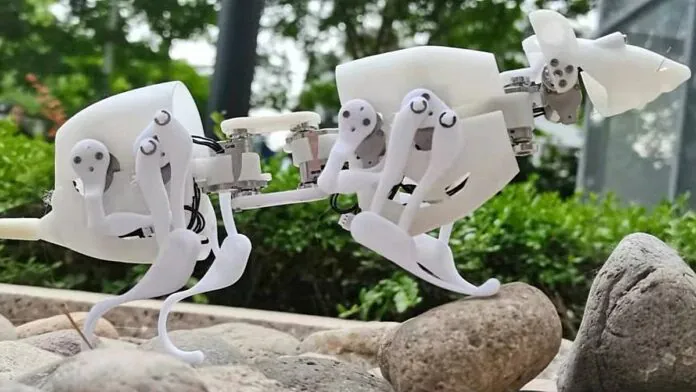© ROOT-NATION.com - Use of content is permitted with a backlink.
While scientists have already created robots based on snakes and cockroaches to study limited space, rats are also very good at squeezing through narrow openings and overcoming uneven terrain. Now they have their own robotic equivalent named SQuRo.
Although “SQuRo” may sound like the name of a squirrel robot, it actually means “little four-legged robot rat.” It is currently being developed in China at the Beijing Institute of Technology by a team led by Professor Qing Shi. The dimensions and body shapes of the Norwegian rat (rattus norvegicus) were taken as a basis. The robot has two degrees of freedom in each of the four legs, two in the waist and two in the head. This setup mimics the long flexible spine of a real rat, allowing the robot to bend and rotate quickly.
The minimum turning radius is only 0.48 of body length, which is reported to be much smaller than other four-legged robots of similar scale. It is also said that the SQuRo is thinner and lighter than such robots, weighing 220 g. However, it can carry more cargo – up to 200 g – in the form of cameras or other sensors.

In addition, the robot can straighten after a fall, squeeze through irregularly shaped passages up to 90 mm wide, overcome obstacles up to 30 mm high and maintain stable movement when climbing a 15-degree slope. Its movements are controlled by an onboard microprocessor, which automatically switches between the four main modes of motion based on the detected force of the earth’s reaction – the latter is defined as “force acting from the ground on the body in contact with it.”
There’s hope that with the further development of SQuRo technology, it can be used for tasks such as searching for survivors of natural disasters or conducting inspections in hard-to-reach places.
You can also help Ukraine fight with Russian occupants via Savelife or via an official page of the National Bank of Ukraine.
Read also:
- Launch your cargo into orbit in 10 minutes with hypersonic space cannon
- NASA’s new telescope will look for extraterrestrial organics


